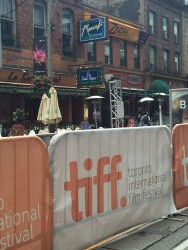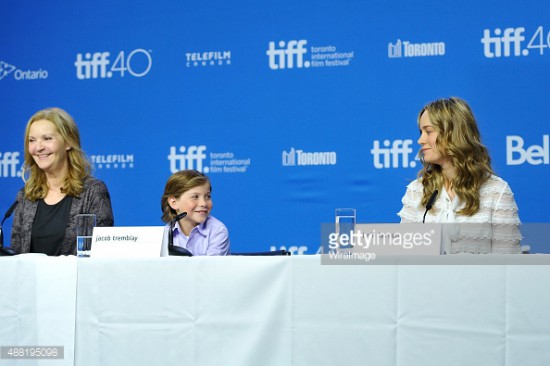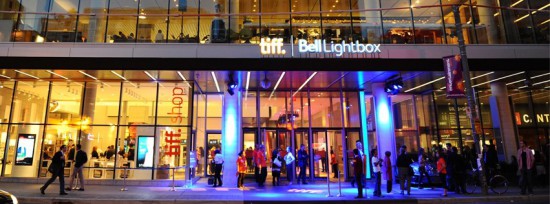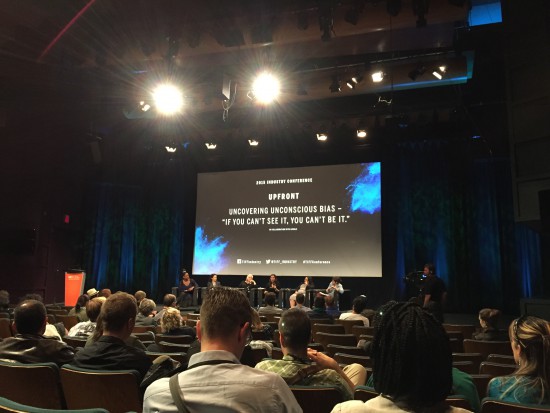TIFF 2015 Report
 Originally known as the “Festival of Festivals,” the Toronto International Film Festival (TIFF) celebrated its 40th anniversary between September 10th and 20th. The ten-day annual festival is a bustling, temporal, and often chaotic experience of navigating particular festival procedures, cultures, and cityscapes. The festival space encompasses a variety of operations and attracts well over 400,000 participants who descend upon Canada’s media capital to watch movies and talk business. Similar to other major international film festivals, TIFF serves as a microcosm for understanding contemporary media industries where activities span production, distribution, and exhibition as well as reflect the evolving nature of film festivals.
Originally known as the “Festival of Festivals,” the Toronto International Film Festival (TIFF) celebrated its 40th anniversary between September 10th and 20th. The ten-day annual festival is a bustling, temporal, and often chaotic experience of navigating particular festival procedures, cultures, and cityscapes. The festival space encompasses a variety of operations and attracts well over 400,000 participants who descend upon Canada’s media capital to watch movies and talk business. Similar to other major international film festivals, TIFF serves as a microcosm for understanding contemporary media industries where activities span production, distribution, and exhibition as well as reflect the evolving nature of film festivals.
A couple of things are distinct about TIFF. First, the festival opened a permanent space known as the TIFF Bell Lightbox in 2010. Located in a centrally coveted Toronto neighborhood, the expansive facility serves as the organization’s headquarters and heart of the festival but also as a center for archival research, media education, and cultural events throughout the year. Second, TIFF is a public festival open to anyone and everyone without a formalized film market as is the case with its peer festival of Berlin or Hong Kong. The majority of attendees are the general public with only a small percentage holding industry credentials. On the one hand, essentially anyone can go online or to a theater venue to buy tickets for any film featured in one of the sixteen film series. On the other hand, access is still a major factor. For films with significant buzz or bigger stars, tickets may sell out quickly for any of the two to three public screenings. Yet, audience members can “rush” a screening an hour or more prior to the start time to purchase any available tickets. Industry credentials provide another layer of access and are available to professionals including buyers, sellers, filmmakers, producers, and more recently scholars. Access to an industry badge reveals a more multi-faceted view of festival activities beyond public screenings and red carpet premieres. Industry passes allow entry to closed press and industry screenings as well as a separate industry conference with a week of panels discussing the current state of the film business.
Finally, TIFF is classified as a non-competitive festival. Film selections are not categorized as “In Competition” nor does it offer competitive prizes awarded by a high profile jury in the case of Cannes, Berlin, or Sundance.[1] The major award emerging from TIFF is the People’s Choice Award. General attendees vote over the ten-day period by dropping a film ticket of their choice into a voting box gathered by festival volunteers. The Irish-Canadian co-production Room (2015, dir. Larry Abrahamson) won the 2015 People’s Choice Award. Some festival films often exchange or parlay premiere coverage and critical reception into a Hollywood award season run from industry guild awards to the Academy Awards. Upon the announcement of Room‘s People’s Choice win, Deadline Hollywood and The Hollywood Reporter began speculating about the film’s Oscar prospects. The capital or value garnered from a film’s TIFF positioning and subsequent promotional campaign may unfold over time through a subsequent industry award season performance to a successful theatrical and/or home entertainment release. In other words, the lifespan of a film’s financial, cultural, and industrial impact only begins in Toronto.

Beyond its impact on the local economy, urban redevelopment, and Canadian film industry, one of TIFF’s function is to position and launch recent film premieres of large-scale Hollywood studio productions like Ridley Scott’s The Martian starring Matt Damon or Scott Cooper’s Black Mass featuring Johnny Depp. TIFF also programs and supports a number of international art house fare and first-time filmmakers including Deniz Gamze Ergüven’s Mustang or Simon Fitzmaurice’s My Name is Emily, respectively. As a media industries scholar who primarily utilizes fieldwork, industry interviews, and participant observation, I was struck by the varied networks of promotional activities during the event. I ground this initial discussion in a rich tradition of film festival studies that incorporates ethnography and insider positionality to explore film festival dynamics. Particularly, using the case of Room, I was able to trace the film’s circulation and promotional activities across the festival’s short period by attending a number of events from the initial press conference encompassing around 40 journalists to a press screening full of critics, journalists, buyers, and so on. Each festival space operates by its own distinct rules and culture yet is bound by a similar trajectory of promotion and spin. The tightly controlled press conference Q&A featuring the director, screenwriter/author, and central cast was structured differently and offered a unique tone from the largely casual morning press screening or highly ritualized public premiere and celebratory Q&A afterwards with director and cast.
In addition to my own investment in exploring an on-the-ground methodology, I had a pedagogical opportunity to experience the festival alongside a group of my Oakland University undergraduate students. My colleague Brendan Kredell and I spent the past year organizing a student trip to TIFF to correspond with a team-taught course on film festivals that we are teaching during the fall 2015 semester. A group of 18 students, comprised of junior and senior Cinema Studies students from our university, attended screenings, industry conference panels, red carpet events, and OU-organized master classes. Since there are over 400 films screened each year at TIFF, each student curated or created their own experience shaped largely by the chosen film series, panels, and events they attended. As part of our film festivals course, the students conducted their own fieldwork keeping research notebooks, posting daily blog entries, shooting footage for a short documentary, and participating in a class podcast. The trip served as a pilot program combining an interactive festival experience with creative production projects, film criticism, industry research, and professionalization opportunities.
By combining my interest and investment in the media industries as a teacher-scholar, Toronto International Film Festival offered a number of opportunities to examine festival structures, film cultures, reception activities, cultural geographies, and industry dynamics for myself, my colleague, and our students. As the Toronto-based event evolves each year, so does the scholarly and pedagogical project. For example, the festival introduced a series this year called Primetime featuring television dramas. While the relationship between television and film festival is not a new one, it does signal a shift in TIFF’s structural organization and how it may be reimagining its brand. As TIFF evolves to reflect the changing nature of the media industries, it provides a temporal learning experience and experiment for exploring the complexities and dynamics of global media as well as expanding our classroom beyond the walls of the university.
[1] A new film series—Platform—was introduced this year and featured a dozen “best of international cinema” selections bound outside of any country quotas. In celebration of the festival’s anniversary, a jury was chosen to judge the Toronto Platform Prize for best film in this category. As I learned from a conversation with my colleague Brendan Kredell, the international film festival body FIAPF grants TIFF a special “non-competitive” status unlike peer competitive festivals Cannes and Berlin.




